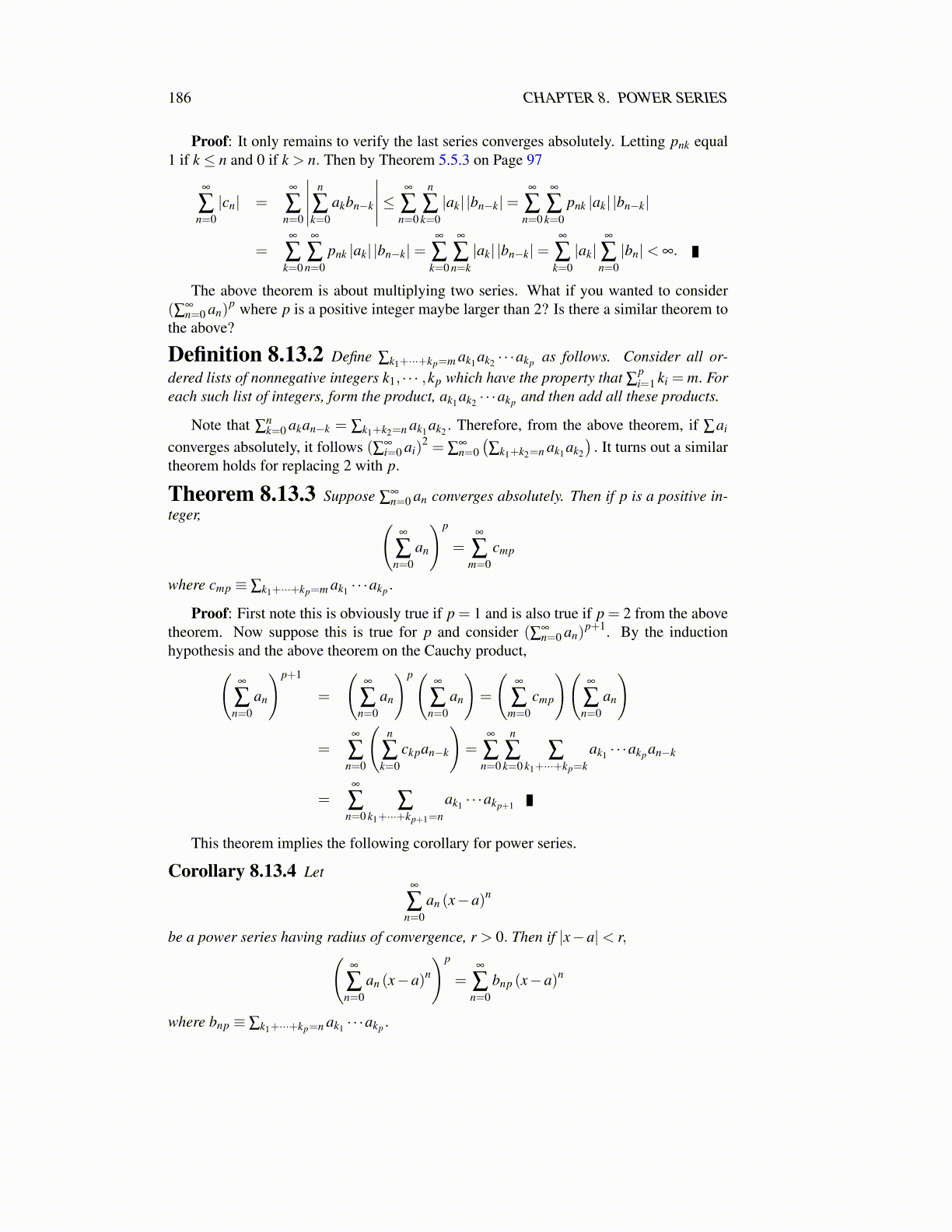
186 CHAPTER 8. POWER SERIES
by 8.32 and the formula for the sum of a geometric series. Since the series of 8.33 convergesabsolutely, Theorem 5.5.3 on Page 95 implies the series in 8.33 equals
∞
∑n=0
(∞
∑p=0
bnp
)(x−a)n
and so, letting ∑∞p=0 bnp ≡ bn, this proves the lemma.
With this lemma, the following theorem is easy to obtain.
Theorem 8.13.6 Let f (x) = ∑∞n=0 an (x−a)n, a power series having radius of con-
vergence r > 0. Suppose also that f (a) ̸= 0. Then there exists r1 > 0 and {bn} such thatfor all |x−a|< r1,
1f (x)
=∞
∑n=0
bn (x−a)n .
Proof: Let g(x)≡ f (x)/ f (a) so that g(x) satisfies the conditions of the above lemma.Then by that lemma, there exists r1 > 0 and a sequence, {bn} such that
f (a)f (x)
=∞
∑n=0
bn (x−a)n
for all |x−a|< r1. Then 1f (x) = ∑
∞n=0 b̃n (x−a)n where b̃n = bn/ f (a) .
There is a very interesting question related to r1 in this theorem. Consider f (x) =1+ x2. In this case r = ∞ but the power series for 1/ f (x) converges only if |x| < 1. Whathappens is this, 1/ f (x) will have a power series that will converge for |x−a|< r1 where r1is the distance between a and the nearest singularity or zero of f (x) in the complex plane.In the case of f (x) = 1+x2 this function has a zero at x =±i. This is just another instanceof why the natural setting for the study of power series is the complex plane. To read moreon power series, you should see the book by Apostol [3] or any text on complex variable.An introduction is given later in this book.